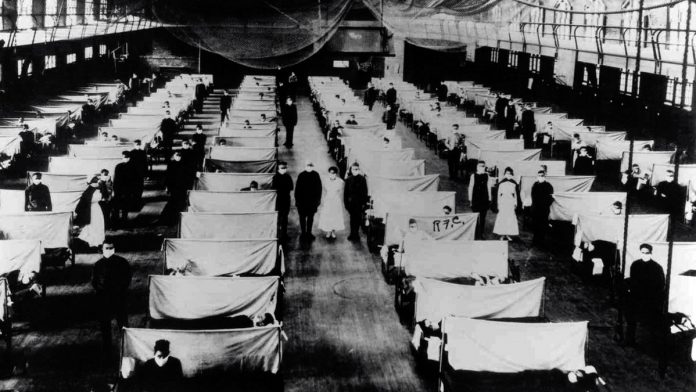The influenza pandemic of 1918, the deadliest outbreak of disease in modern times, exacted a terrible toll, and not just in lives. Much like the coronavirus today, it strained the bonds holding society together.
The Centers for Disease Control and Prevention says that at least 50 million people died during the influenza outbreak — more than during World War I — including about 675,000 in the U.S. Some epidemiologists think the death toll could have been as high as 100 million, John M. Barry wrote in The Great Influenza: The Story of the Deadliest Pandemic in History.
In Philadelphia, one of the hardest-hit cities in America, “fear came and stayed,” Barry wrote. “Death could come from anyone, anytime. People moved away from others on the sidewalk, avoided conversation; if they did speak, they turned their faces away to avoid the other person’s breathing. People became isolated, increasing the fear.”
How some Christians responded to the 1918 pandemic
Although health officials have avoided comparisons between the outbreaks, the impact of influenza 100 years ago on community life, such as church services, seems eerily familiar today.
In Providence, Rhode Island, evangelist Billy Sunday held a crusade, with one newspaper reporting that 10,000 people “grasped Mr. Sunday’s hand.” Although he vowed to “pray down” the epidemic, people in the crowd, sick with the flu, collapsed. The influenza canceled three weeks of his nightly services.
Government officials around the country called a halt to public meetings such as church services for safety’s sake, just like during the coronavirus outbreak. With no place to meet, pastors sent their sermons to local newspapers to print. One pastor in Los Angeles had Boy Scouts deliver Sunday school lessons to his church members. Other pastors encouraged their flocks to meet in homes, like the Apostles did.
In Ennis, Texas, a man said that he wouldn’t be able to attend worship services for the first time in 12 years. But he told the Gospel Advocate, “We had three funerals here Sunday.”
Some churches protested restrictions on indoor services. Others got around them by meeting outside. At the First Baptist Church of San Francisco, the theme of one such Sunday service was “The Spanish Influenza, One of the Last Plagues.”
Stepping over corpses
Wartime conditions contributed to the spread of the virus.
Soldiers, jammed into barracks at home and trenches at the front, moved from base to base and from America to Europe. One of the worst outbreaks came at Camp Devens near Boston. Built to hold 36,000 men, Devens held 45,000 in September 1918.
SOURCE: Christian Post, Steve Yount
All Content & Images are provided by the acknowledged source
